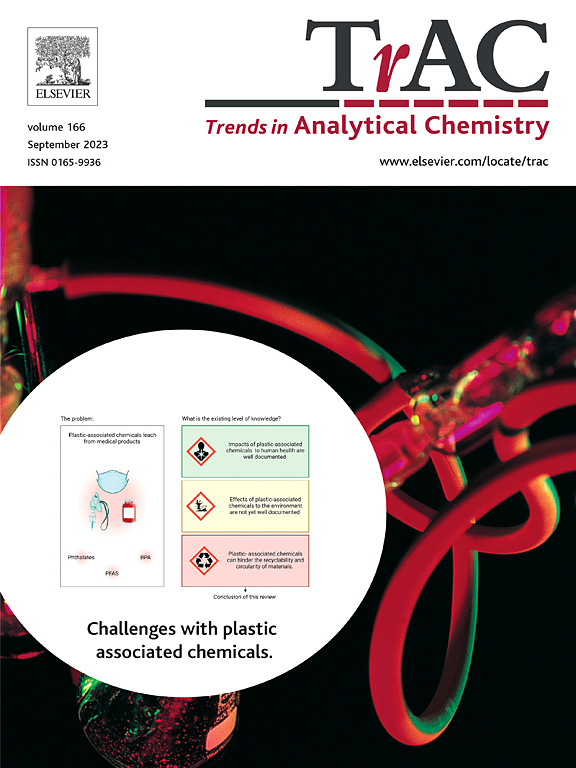Dual-mode SERS-based optical sensors for detection of contaminants in food: A comprehensive review
IF 11.8
1区 化学
Q1 CHEMISTRY, ANALYTICAL
引用次数: 0
Abstract
Food safety is an escalating global issue with significant implications for public health. To combat this issue, dual-mode optical sensors based on Surface-Enhanced Raman Spectroscopy (SERS) have been proposed as the focus of scientific research. These sensors output two non-interfering optical signals that complement each other's strengths, offering enhanced detection capabilities. Hence, this review systematically explored recent advancements in SERS-based dual-mode optical sensors for detecting contaminants in food matrices, focusing on four prominent types. It outlined the principles of optical detection technology, described the sensing strategies of these sensors, and evaluated their performance in detecting food contaminants. The high sensitivity and reliability of these sensors are enabled by dual-signal verification, reducing misidentification in complex food matrices. Additionally, the review delved into existing challenges and proposed future directions. These advancements position SERS-based dual-mode sensors as powerful analytical tools for accurate, reliable contaminant detection, significantly improving food safety monitoring and quality control.

基于sers的双模光学传感器在食品中污染物检测中的应用综述
食品安全是一个不断升级的全球性问题,对公共卫生具有重大影响。为了解决这一问题,基于表面增强拉曼光谱(SERS)的双模光学传感器被提出作为科学研究的重点。这些传感器输出两种互不干扰的光信号,相互补充优势,提供增强的检测能力。因此,本文系统地探讨了基于sers的双模光学传感器用于检测食品基质中污染物的最新进展,重点介绍了四种突出的类型。概述了光学检测技术的原理,描述了这些传感器的传感策略,并评估了它们在检测食品污染物方面的性能。这些传感器的高灵敏度和可靠性是通过双信号验证实现的,减少了复杂食品基质中的错误识别。此外,该审查还深入探讨了现有的挑战并提出了未来的方向。这些进步使基于sers的双模传感器成为准确、可靠的污染物检测的强大分析工具,显著改善了食品安全监测和质量控制。
本文章由计算机程序翻译,如有差异,请以英文原文为准。
求助全文
约1分钟内获得全文
求助全文
来源期刊

Trends in Analytical Chemistry
化学-分析化学
CiteScore
20.00
自引率
4.60%
发文量
257
审稿时长
3.4 months
期刊介绍:
TrAC publishes succinct and critical overviews of recent advancements in analytical chemistry, designed to assist analytical chemists and other users of analytical techniques. These reviews offer excellent, up-to-date, and timely coverage of various topics within analytical chemistry. Encompassing areas such as analytical instrumentation, biomedical analysis, biomolecular analysis, biosensors, chemical analysis, chemometrics, clinical chemistry, drug discovery, environmental analysis and monitoring, food analysis, forensic science, laboratory automation, materials science, metabolomics, pesticide-residue analysis, pharmaceutical analysis, proteomics, surface science, and water analysis and monitoring, these critical reviews provide comprehensive insights for practitioners in the field.
 求助内容:
求助内容: 应助结果提醒方式:
应助结果提醒方式:


